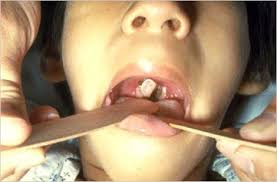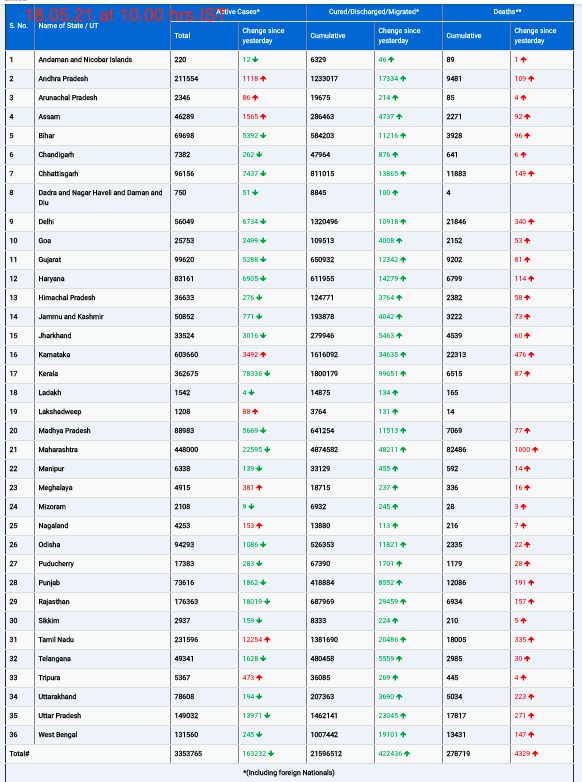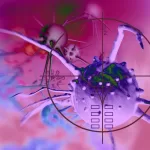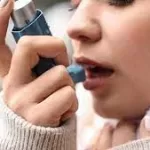Situation at a glance
Description of the situation
Since the last Disease Outbreak News on this event was published on 1 November 2024, no new confirmed cases of Marburg virus disease (MVD) were reported in Rwanda. As of 8 November 2024, 66 confirmed cases, including 15 deaths (CFR, 23%), have been reported and 51 people have now recovered. Among the confirmed cases, 68% are males, and 45% are adults between 30 and 39 years of age. Health workers from two health facilities in Kigali account for almost 80% of all confirmed cases. Most cases are reported from the three districts of Kigali city.
The highest number of confirmed cases (61) were reported in the first three epidemiological weeks (week 39-41) of the outbreak. This was followed by a sharp decline, with three or less cases reported between epidemiological week 42 (14 to 20 October), and 44 (28 October to 3 November).
As of 8 November 2024, 7408 Marburg virus tests have been conducted, with approximately 100-350 samples being tested daily at the Rwanda Biomedical Center.
Contact tracing is ongoing, with 470 contacts listed under follow-up as of 11 November 2024.
On 9 November 2024, the recommended 42-day countdown to declare the end of the outbreak commenced, the day after the last confirmed MVD patient tested negative by PCR. The 42-day countdown period is twice the maximum incubation period for Marburg virus infections, since the last potential exposure to the last reported case. The country has reported no new confirmed cases since 30 October 2024 and no new deaths since 14 October. All listed contacts will continue to be followed up until the end of their 21-day observation period. The outbreak will only be declared over if no new infections arise during the 42-day countdown.
WHO continues to support the Government of Rwanda to respond to the ongoing outbreak. Enhanced surveillance, and IPC measures must be maintained until the outbreak is declared over.
Figure 1. MVD cases by week of reporting in Rwanda, as of 8 November 2024, (n=66)
*Week 45 (4 to 10 November 2024) has incomplete data
Epidemiology
MVD is a highly virulent disease that can cause severe disease and is clinically similar to Ebola virus disease. Marburg and Ebola viruses are both members of the Filoviridae family (filovirus). People are infected after prolonged exposure to mines or caves inhabited by Rousettus fruit bat colonies, a type of fruit bat, that can carry the Marburg virus. Marburg virus then spreads between people via direct contact (through broken skin or mucous membranes) with the blood, secretions, organs or other bodily fluids of infected people, and with surfaces and materials (e.g. bedding, clothing) contaminated with these fluids. Health workers have previously been infected while treating patients with suspected or confirmed MVD. Burial ceremonies that involve direct contact with the body of the deceased can also contribute to the transmission of Marburg virus.
The incubation period varies from two to 21 days. Illness caused by Marburg virus begins abruptly, with high fever, severe headache and severe malaise. Severe watery diarrhoea, abdominal pain and cramping, nausea and vomiting can begin on the third day. Although not all cases present with haemorrhagic signs, severe haemorrhagic manifestations may appear between five and seven days from symptoms onset, and fatal cases usually have some form of bleeding, often from multiple areas. In fatal cases, death occurs most often between eight and nine days after symptom onset, usually preceded by severe blood loss and shock. There is currently no approved treatment or vaccine for MVD. Some candidate vaccines and therapeutics are currently under investigation.
Seventeen outbreaks of MVD have previously been reported globally. The most recent outbreaks were reported in Equatorial Guinea and the United Republic of Tanzania between February and June 2023. Additional countries that previously reported outbreaks of MVD in the African Region include Angola, the Democratic Republic of the Congo, Ghana, Guinea, Kenya, South Africa, and Uganda.
Public health response
- The Government of Rwanda is coordinating the response with support from WHO and partners.
- A surge team from WHO has been deployed to support the in-country response across the functions of incident management, epidemiology, health operations, case management, infection prevention and control, laboratory, health logistics, therapeutics and vaccines research, and partner coordination.
- WHO and partners support MoH with surveillance training of trainers and follow-up cascade training to district hospitals and health centers in the country.
- WHO continues to support diagnostic testing for MVD in Rwanda through provision of laboratory supplies and technical support. WHO is continuously engaged with its viral hemorrhagic fever collaborating centers and other reference laboratories and partners to support assessment of diagnostics test performance and ensuring technical support to continue regarding MVD testing.
- WHO is supporting the Government in the establishment of a programme for recovered patients, by sharing technical guidance and protocols for the establishment of a national programme and by supporting the Rwanda Ministry of Health (MOH) implementation effort.
- WHO is supporting the implementation of the nationally approved and launched Marburg therapeutics clinical trial. The trial is enrolling patients as they are admitted to the established MVD treatment center.
- WHO supported MOH in assessing the national IPC, Water, Sanitation and Hygiene (WASH) readiness for response capabilities to MVD outbreak
- WHO and partners supported the MOH in conducting a validation workshop on the developed national IPC operational guide and SOPs, which are being disseminated to health facilities.
- WHO in collaboration with Africa CDC and partners are assisting in strengthening capacity within the MOH through the national IPC Training of the Trainers (ToT) program on MVD, being held from 11 to 16 November, targeting national IPC focal points.
- WHO has supported the strengthening of IPC capacities by providing IPC training to national veterinarians, who are being deployed to districts to lead bat surveillance and sampling activities.
- WHO is collaborating with MOH to enhance IPC capacities by continuing onsite training activities for healthcare workers and providing mentorship and supervision in different priority health facilities.
- WHO supported MOH in the enhancing of IPC measures in the isolation and treatment facility.
- WHO and partners (IOM, Africa CDC) are supporting in building capacity at the points of entry (POE) through the national ToT program, being held from 11- 16 November, targeting MVD/Mpox screeners at the POEs.
- WHO has provided technical advice to public health authorities in Rwanda and at-risk countries on the implementation of evidence-informed and risk-based health measures; the strengthening of detection, reporting and management capacities at points of entry and across borders; and travel advice.
- WHO has published interim guidance on the Considerations for border health and points of entry for filovirus disease outbreaks, which applies to but is not limited to the current MVD outbreak in Rwanda.
- WHO has also published a statement advising against any travel restrictions and against any trade restrictions with Rwanda in the context of the ongoing MVD outbreak.
- WHO is providing support in surrounding countries to assess the readiness of healthcare facilities, points of entry and border communities within surrounding countries and specifically risk mapping for areas bordering Rwanda.
- WHO is supporting the MVD treatment center with direct support from clinical experts in infectious disease, critical care and nursing as well as health logistics and WASH expertise.
- WHO is conducting training of clinical staff at MVD treatment on general aspects of MVD health operations, case management and optimized supportive care. MoH providing to trainees.
- WHO is supporting the national case management pillar to collect standardized patient level data based on WHO electronic case report form from the WHO Global Clinical Platform and making descriptive reports of case management responses to outbreak.
WHO risk assessment
Marburg virus disease (MVD) is caused by the same family of viruses (Filoviridae) that causes Ebola virus disease. MVD is an epidemic-prone disease associated with high CFR (24-88%). In the early course of the disease, MVD is challenging to distinguish from other infectious diseases such as malaria, typhoid fever, shigellosis, meningitis and other viral haemorrhagic fevers. Epidemiologic features can help differentiate between viral hemorrhagic fevers (including history of exposure to bats, caves, or mining) and laboratory testing is essential to confirm the diagnosis.
With 66 confirmed cases reported, this is the third largest MVD outbreak reported to date, with almost 80% of confirmed cases reported among health workers. Healthcare-associated infections (also known as nosocomial infections) of this disease can lead to further spread if not controlled early. The importance of screening all persons entering health facilities as well as inpatient surveillance for prompt identification, isolation, provision of care and notification cannot be overemphasized. This is in addition to the importance of contact identification and listing and daily follow-up of all contacts.
Based on the outbreak investigation which included record review in health facilities, review of epidemiological data, serology and genomic sequencing, as well as environmental and animal testing, the source of the outbreak is reported to be of zoonotic origin, linked to exposure in a cave inhabited by fruit bats.1 However, the dates of symptom onset of cases are still unknown to WHO.
MVD is not easily transmissible (i.e. in most instances it requires contact with the body fluids of a sick patient presenting with symptoms or with surfaces contaminated with these fluids). In addition, there are ongoing public health measures in place, including active surveillance in facilities and communities, testing suspected cases, isolation and treatment of cases and contact tracing.
WHO advice
MVD outbreak control relies on using a range of interventions, including prompt isolation and case management; surveillance including active case search, case investigation and contact tracing; a laboratory service; infection prevention and control, including prompt safe and dignified burial; and social mobilization – community engagement is key to successfully controlling MVD outbreaks. Raising awareness of risk factors for Marburg virus infection and protective measures that individuals can take is an effective way to reduce human transmission. WHO advises the following risk reduction measures as an effective way to reduce MVD transmission in healthcare facilities and in communities:
- To reduce human infections and deaths, it is essential to raise community awareness about the risk factors for Marburg virus infection particularly of human-to-human transmission, and the protective measures individuals can take to minimize exposure to the virus. This includes encouraging anyone with symptoms to seek immediate care at a health facility or designated treatment center to lower the risk of community transmission and improve their chances for recovery.
- Reducing the risk of bat-to-human transmission arising from prolonged exposure to mines or caves inhabited by fruit bat colonies. People visiting or working in mines or caves inhabited by fruit bat colonies should wear gloves and other appropriate protective clothing (including masks).
- Surveillance activities, including the wide dissemination of the MVD case definition, should be strengthened in all affected districts, including contact tracing and active case finding.
- Critical infection prevention and control measures should be implemented and/or strengthened in all health care facilities, per WHO’s Infection prevention and control guideline for Ebola and Marburg disease. Health workers caring for patients with confirmed or suspected MVD should apply Transmission-based precautions in addition to: Standard precautions, including appropriate use of PPE and hand hygiene according to the WHO 5 moments to avoid contact with patient’s blood and other body fluids and with contaminated surfaces and objects. Waste generated in healthcare facilities must be safely segregated, safely collected, transported, stored, treated and finally disposed. Follow the national guidelines, rules and regulations for safe waste disposal or follow the WHO’s guidelines on safe waste management
- Patient-care activities should be undertaken in a clean and hygienic environment that facilitates practices related to the prevention and control of health-care-associated infections (HAIs) as outlined in Essential environmental health standards in health care. Safe water, adequate sanitation and hygiene infrastructure and services should be provided in healthcare facilities. For details on recommendations and improvement, follow the WASH FIT implementation Package
- A comprehensive strategy to manage deceased individuals in communities should be implemented. Safe and dignified burials should be carried out, with strong engagement of communities.
- Rapid qualitative assessments should be implemented to collect socio-behavioural data, which can then be utilized to guide the response.
- Results of the phone Knowledge, Attitude and Practices (KAP) survey and other surveys should be integrated into the response strategy and interventions.
- Timely laboratory testing of all suspected cases needs to be maintained and supported with a reliable sample transportation system.
- WHO encourages the sharing of genomic sequencing data to inform the public health response.
- Border health readiness and response capacities should be strengthened at points of entry and in communities bordering areas reporting MVD cases and onboard conveyances, and public health advice should be provided to travellers in line with WHO’s interim guidance on considerations for border health and points of entry for filovirus disease outbreaks.
- WHO encourages all countries to send the first samples that tested positive for Marburg virus and a subset of negative samples to a WHO Collaborating Centre or a regional reference laboratory for inter-laboratory comparison.
- WHO recommends that clinical data from suspected and confirmed Marburg virus disease cases be systematically collected to improve the limited understanding of the clinical course and direct causes and risk factors for poor outcomes. This can be done by contributing anonymized data to the WHO Global Clinical Platform for viral haemorrhagic fevers.
- Given the risk of re-emergence of MVD through a reintroduction event or a new emergence, and the possibility of a missed transmission chain, heightened surveillance and response activities should be sustained during the initial 42-day period and for at least six months beyond, WHO recommends several activities during the 42-day period including:2
- Ensure active case finding around confirmed cases and transmission chains;
- Implement both active and passive surveillance (e.g. through regular health facility visits and by maintaining a nationwide system of alerts and signals);
- Conduct post-mortem testing for MVD following suspected deaths in the community;
- Maintain and strengthen rapid response team capacities.
- WHO advises that all patients with MVD receive holistic care including optimized supportive care including critical care and mental health services in a treatment center designed for optimal patient care and patient centered experience with biosecurity measures such as unidirectional patient and staff flow and WASH services in place.
- WHO encourages countries to implement a comprehensive care programme to support people who recovered from MVD with any subsequent sequelae and to enable to them to mitigate the risk of transmission through infected body fluids by adequate practices and through body fluid testing.
Based on the current risk assessment, WHO advises against any travel restrictions or any trade restrictions with Rwanda at this time. For further information, please see WHO advice for international traffic in relation to the Marburg virus disease outbreak in Rwanda.
Further information
- Rwanda begins countdown to declare Marburg outbreak over. Available at: https://www.afro.who.int/countries/rwanda/news/rwanda-begins-countdown-declare-marburg-outbreak-over?country=Rwanda&name=Rwanda
- Marburg virus information, Rwanda Biomedical Centre. Available at: https://rbc.gov.rw/marburg/
- The Ministry of Health | Rwanda: Press Briefing on Marburg Virus Outbreak in Rwanda 20.10.2024. Available at: https://www.youtube.com/live/6YvzD8lDrdc
- Marburg virus disease outbreak – Rwanda 2024. Available at: https://www.who.int/emergencies/situations/mvd-rwanda-2024
- Official X account of the Ministry of Health, Government of Rwanda. Available at https://x.com/RwandaHealth
- Rwanda Ministry of Health Press release on Marburg Virus Diseases, 27 September 2024. Available at https://x.com/RwandaHealth/status/1839656238105104424
- Rwanda Ministry of Health update as of 8 November 2024. https://x.com/RwandaHealth/status/1854956938447962482/photo/2
- WHO press release on announcement by Rwanda, 28 September 2024. Available at: https://www.afro.who.int/countries/rwanda/news/rwanda-reports-first-ever-marburg-virus-disease-outbreak-26-cases-confirmed
- Marburg virus disease global strategic preparedness and response plan for Rwanda. Available at: https://www.who.int/publications/m/item/marburg-virus-disease-global-strategic-preparedness-and-response-plan-for-rwanda
- WHO appeal: Marburg virus disease outbreak Rwanda 2024. Available at: https://www.who.int/publications/m/item/who-appeal–marburg-virus-disease-outbreak-rwanda-2024
- WHO factsheet – Marburg virus disease. Available at: https://www.who.int/news-room/fact-sheets/detail/marburg-virus-disease
- WHO questions and answers – Marburg virus disease. Available at: https://www.who.int/news-room/questions-and-answers/item/marburg-virus-disease
- Weekly operational update on response to Marburg virus disease in Rwanda. Available at: https://www.afro.who.int/countries/rwanda/publication/weekly-operational-update-response-marburg-virus-disease-rwanda
- WHO advises against any travel and trade restrictions with Rwanda in the context of the ongoing Marburg virus disease (MVD) outbreak. Available at: https://www.who.int/news-room/articles-detail/who-advises-against-any-travel-and-trade-restrictions-with-rwanda-in-the-context-of-the-ongoing-marburg-virus-disease-(mvd)-outbreak
- Research and Development forfiloviruses including Marburg.Available at: https://www.who.int/teams/blueprint/ebolavirus
- Considerations for border health and points of entry for filovirus disease outbreaks. Available at: https://www.who.int/publications/m/item/considerations-for-border-health-and-points-of-entry-for-filovirus-disease-outbreaks
- Syndromic entry and exit screening for epidemic-prone diseases of travellers at ground crossings. Available at: https://www.who.int/publications/i/item/9789240090309
- Infection prevention and control guidelines for Ebola and Marburg disease, August 2023. Available at: https://www.who.int/publications/i/item/WHO-WPE-CRS-HCR-2023.1
- Standard precautions for the prevention and control of infections: aide-memoire. Available at: https://www.who.int/publications/i/item/WHO-UHL-IHS-IPC-2022.1
- Transmission-based precautions for the prevention and control of infections: aide-memoire. Available at: https://www.who.int/publications/i/item/WHO-UHL-IHS-IPC-2022.2
- Steps to putting on PPE for Ebola/Marburg coverall. Available at: https://www.who.int/multi-media/details/steps-to-put-on-ppe-for-ebola-marburg-disease-coverall
- Steps to removing PPE for Ebola/Marburg disease coverall. Available at https://www.who.int/multi-media/details/steps-to-remove-ppe-for-ebola-marburg-disease-coverall
- Steps to putting on PPE for Ebola/Marburg gown and headcover. Available at: https://www.who.int/multi-media/details/steps-to-put-on-ppe-for-ebola-marburg-disease-gown-and-headcover
- Steps to removing PPE for Ebola/Marburg gown and headcover. Available at: https://www.who.int/multi-media/details/steps-to-remove-ppe-for-ebola-marburg-disease-gown-and-headcover
- Essential environmental health standards in healthcare facilities- https://www.who.int/publications/i/item/9789241547239#
- WASH FIT implementation for WASH improvements in healthcare facilities. Available at: https://openwho.org/courses/wash-fit
- WASH FIT Fact Sheets. Available at: https://www.washinhcf.org/wash-fit-fact-sheets/
- World Health Organization (March 2009). Hand hygiene technical reference manual: to be used by health-care workers, trainers and observers of hand hygiene practices. Available at https://www.who.int/publications/i/item/9789241598606
- Ebola and Marburg diseases screening and treatment center design training. Available at: https://openwho.org/courses/ebola-marburg-screen-treat-facilities
- World Health Organization (2 June 2023). Disease Outbreak News; Marburg virus disease in the United Republic of Tanzania. Available at https://www.who.int/emergencies/disease-outbreak-news/item/2023-DON471
- Markotter W, Coertse J, DeVries M, et al. Bat-borne viruses in Africa: a critical review. J of Zoology. 2020;311:77-98. doi:10.1111/jzo.12769. https://zslpublications.onlinelibrary.wiley.com/doi/10.1111/jzo.12769(link is external)
- Korine C Rousettus aegyptiacus. The IUCN Red List of Threatened Species 2016: e.T29730A22043105. https://www.iucnredlist.org/species/29730/22043105
- Cross RW, Longini IM, Becker S, Bok K, Boucher D, Carroll MW, et al. (2022) An introduction to the Marburg virus vaccine consortium, MARVAC. PLoS Pathog 18(10): e1010805. https://doi.org/10.1371/journal.ppat.1010805
- A WHO-Strategic Research Agenda for Filovirus Research and Monitoring (WHO-AFIRM). https://www.who.int/publications/m/item/a-who-strategic-research-agenda-for-filovirus-research-and-monitoring—–(who-afirm)
- Building research readiness for a future filovirus outbreak, Workshop February 20 – 22, 2024, Uganda https://www.who.int/news-room/events/detail/2024/02/20/default-calendar/building-research-readiness-for-a-future-filovirus-outbreak-workshop-february-20-22-2024-uganda
- WHO Technical Advisory Group – candidate vaccine prioritization. Summary of the evaluations and recommendations on the four Marburg vaccines. https://www.who.int/publications/m/item/who-technical-advisory-group—candidate-vaccine-prioritization.–summary-of-the-evaluations-and-recommendations-on-the-four-marburg-vaccines
- Marburg virus vaccine landscape https://www.who.int/publications/m/item/marburg-virus-vaccine-landscape
- Marburg virus therapeutics landscape. Available at: https://www.who.int/publications/m/item/marburg-virus-therapeutics-landscape
- WASH FIT portal. Available at: https://www.washinhcf.org/wash-fit/
- Overview of technologies for the treatment of infectious and sharp waste from health care facilities. Available at: https://www.who.int/publications/i/item/9789241516228
- Safe management of waste from healthcare facilities: Available at: 9789241548564_eng.pdf;sequence=1
[1] Yvan Butera, et al. Genomic characterization uncovers transmission dynamics of Marburg Virus in Rwanda following a single zoonotic spillover event. medRxiv 2024.11.01.24316374; doi: https://doi.org/10.1101/2024.11.01.24316374 [Preprint]
[2] WHO recommended criteria for declaring the end of the Ebola virus disease outbreak where these recommended activities are included. Available at: https://www.who.int/publications/m/item/who-recommended-criteria-for-declaring-the-end-of-the-ebola-virus-disease-outbreak
Citable reference: World Health Organization (13 November 2024). Disease Outbreak News; Marburg virus disease in Rwanda. Available at: https://www.who.int/emergencies/disease-outbreak-news/item/2024-DON544











